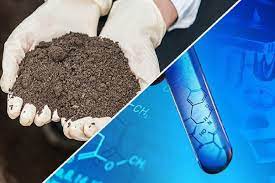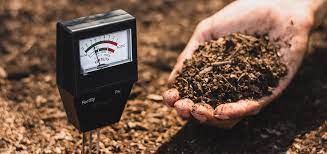Analytical Labs across the globe that perform environmental testing for air, water and soil count on the right techniques and technologies to analyze their samples. Our portfolio of environmental solutions is designed for traditional testing or for regulatory methods to meet agency and industrial regulations.
Environmental Technologies and Applications
For air monitoring, our Clarus GC, GC/MS and Turbo Matrix ATD systems are the world’s most reliable for detecting air toxics, ozone precursors and soil/vapor intrusions.
Installed in over 70% of U.S. state water testing labs, our NexION ICP-MS instruments remain the first choice for determining trace metals in drinking water.
From complex contamination to farmland pesticide analysis, our instruments and applications for both organic and inorganic soil analysis deliver reliable results sooner to enable fast decisions.
Indoor and outdoor air monitoring requires accurate, reliable volatile and/or semi-volatile organic compound analysis. We have demonstrated global leadership in providing the most sophisticated air monitoring systems and methods available anywhere in the world.
Automated thermal desorption and GC technologies to measure ozone precursors, to identify air toxins, to test for soil vapor intrusion.
Unique, turnkey fence line monitoring solutions for measuring and reporting harmful emissions.
Innovative, portable GC/MS technology for rapid on site analysis.
Our water analysis solutions help customers worldwide analyze even the most difficult matrices and time-sensitive samples of drinking water, surface and ground water and waste water to ensure regulatory compliance aiding in our world-wide goal for contamination-free water. We have the most reliable, proven ICP-MS, ICP-OES, GC/MS, and UV/VIS/NIR technologies for water testing.
Superior ICP-MS technology for lead testing and other trace metals to ensure compliance with EPA, EU and APAC regulations.
Accurate and fast GC/MS technology for organic testing using enhanced sample prep and sample introduction applications.
Simple and effective tools to demonstrate regulatory compliance and identify the causes of non-compliance.
Durable, unparalleled stability and reliability for standard testing, emerging micro plastics applications and detection of nanoparticles.
From standard nutrient testing to complex contamination monitoring of high-risk sites, we have the soil analysis solutions for your specific areas of focus. Detect the smallest concentrations of contaminants required by regulations or identify unknown pollutants.
Inorganic elemental analysis of samples using ICP-OES, ICP-MS and AA technology.
Detection of trace levels of volatile organic compounds (VOCs) and semi-volatile organic compounds (SVOCs) using our gas chromatography solutions.
In-field soil testing using our portable GC/MS.
Read Also : Factors Influencing Soil Moisture
Management of Degraded Environment
This interdisciplinary unit aims to develop understanding of some aspects of the impact of human activities on the environment and remedial actions which can be taken.

Topics may include one or more of: urban and industrial environmental remediation; rural landscape degradation processes and pathways; remediation techniques in rural landscapes; river rehabilitation; environmental flows; catchment management strategies; and mine site rehabilitation.
Reforestation
Reforestation refers to the replanting of trees on land that has previously had trees, but where these were cut down recently.
This is not to be confused with afforestation, which also refers to the planting or replanting of trees, however it refers to the planting of trees in an area where trees have not recently been cut down. The principle difference between the two definitions is time.
Erosion Control
Erosion control is the practice of preventing or controlling wind or water erosion in agriculture, land development, coastal areas, river banks and construction. Effective erosion controls handle surface runoff and are important techniques in preventing water pollution, soil loss, wildlife habitat loss and human property loss.
Integrated Vector Management
Integrated Vector Management is a decision-making process focused on protecting public health through the environmentally sound management of vector populations and reducing or interrupting the transmission of vector-borne pathogens
Integrated Waste Management
Rising energy prices and increasing worldwide commitment to reducing greenhouse gas emissions and landfill are driving the development of new approaches to the management of solid waste.
Pollution Control
Pollution control is the process of reducing or eliminating the release of (contaminants, usually human-made) into the environment. It is regulated by various environmental agencies that establish limits for the discharge of into the air, water, and land.
In summary, from standard nutrient testing to complex contamination monitoring of high-risk sites, we have the soil analysis solutions for the specific areas of focus.
Read Also : The Reproductive Rate of Cattle

